The Birth of Kerala
The state of Kerala, located in the southwestern part of India, has a rich and ancient history that dates back to several centuries. Its formation as a distinct administrative entity, however, is relatively recent.
Kerala’s history can be traced back to ancient times, with evidence of trade connections with ancient civilizations like those of Mesopotamia and Egypt. The region was known for its spice trade, and several ancient texts mention its prosperity and cultural exchanges. During the medieval period, the region was ruled by various dynasties, including the Cheras, who were significant in shaping the early history of Kerala
Kerala was a patchwork of different princely states and kingdoms, including Travancore, Cochin, and Malabar, which were under varying degrees of colonial influence. The Portuguese, Dutch, and British had their interests in the region due to its lucrative spice trade.
Kerala’s formation marked a crucial moment in India’s post-independence history, reflecting the country’s commitment to linguistic and cultural unity.
Today, Kerala is known for its high literacy rates, social development, and unique cultural heritage, including its traditional dance forms, cuisine, and festivals.
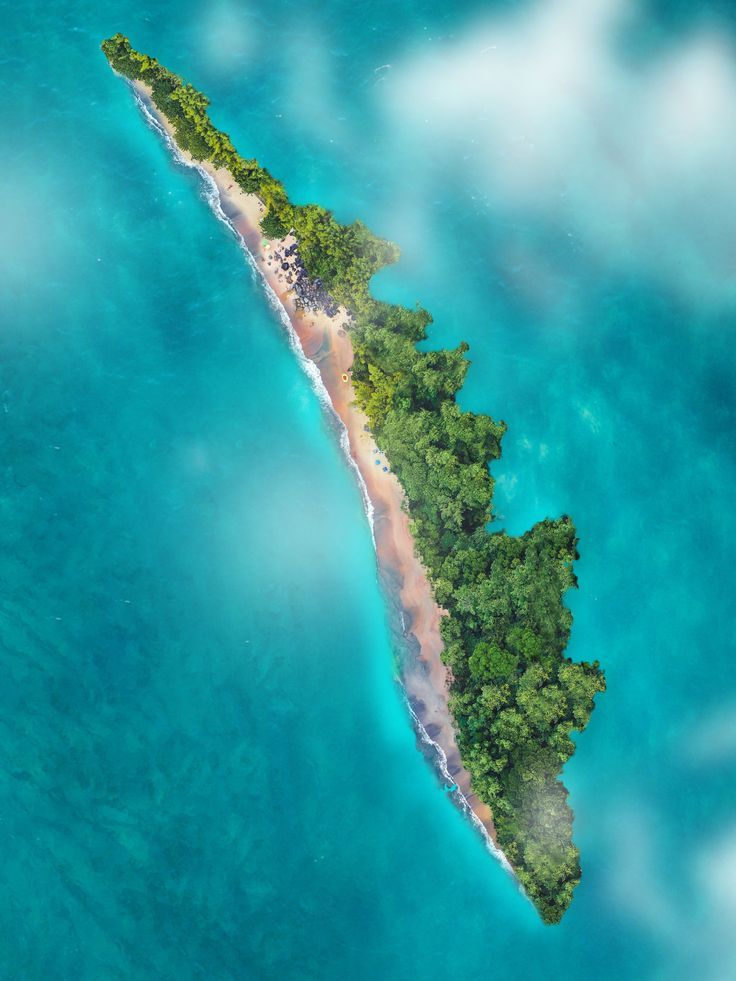
People of Kerala
Nurtured by its climate and terrain, fertilized by a rich variety of cultural steams, Kerala holds a fascinating mosaic of people. They call themselves malayalees and yet they have managed to retain many many of the ethnic characterstics that make them rugged individuals within the complex pattern of Kerala.
The primary ethnic group in Kerala is the Malayali, who speak Malayalam, the state’s official language. They have a distinct cultural identity characterized by unique traditions, festivals, and customs. Kerala is also home to several indigenous communities or Adivasis, . These groups have their own languages, customs, and traditional ways of life.

The majority of the population in Kerala is Hindu. Hinduism in Kerala is diverse, with various sects and practices, including a strong presence of temple festivals and rituals. Muslims form a significant portion of the population, and they follow various sects of Islam. The region has a history of Islamic influence dating back to ancient trade connections with the Middle East. Kerala has a notable Christian population, including various denominations such as Roman Catholics, Syriac Christians, and Protestants. The Christian community has had a significant influence on the region’s culture, education, and social services. There are also smaller communities of Jews, Buddhists, and Jains, adding to the region’s religious diversity.
An Explosion of Festivals
There is no better way of getting to know a people and their land than experiencing their festivals. And Kerala has so many of them that no one, in all probability, has a record of the festive calendar of Kerala.Some of Kerala’s innumerable festivals, however, stand out because of their uniqueness.The least known of the unique festivals of Kerala are its Islamic ones. And, according to an official publication of the Government of Kerala:”The Chandanakkudam at Bheemapally near Trivandrum is one of the most colourful of Muslim festivals in Kerala. The Chandanakkudam Mahotsavam, as it is called, is said to be the death anniversary of Bheema Beevi, a devout pilgrim lady who came to Kerala from Mecca. The festival begins on the 1st of Jamadul Akhar of the Hijira Era (October) and lasts ten days. Carrying earthern pots smeared with sandalwood paste and the mouth of the pot tightly closed with white cloth with a jasmine garland around its edges, thousands of pilgrims both Muslims and non-Muslims go round the mosque and the hallowed tomb of the devout lady in procession, the earthern pot with money being placed at the tomb as offering.”
Christmas, December 25, is also a major festival in Kerala. Streamers, bunting and bright lights adorn shops but, most typical, are the illuminated stars that distinguish the many Christian houses of Kerala. These, twinkling against the dark groves and reflected in its flowing waters, make for an unusual, but very warm, Christmas image.
In the last week of February, the river town of Alwaye plays host to the great Maha Sivarathri festival. Devotees gather on the sand-banks of the Pamba River and, illuminated by hundreds of little oil lamps, spend the whole night in fasting and meditation. In the small hours of the morning they plunge into the river, accompanied by full-throated chants, and then emerge to offer prayers and sacrifices in memory of the dead. The fair which grows around this festival is popular with people of all persuasions.
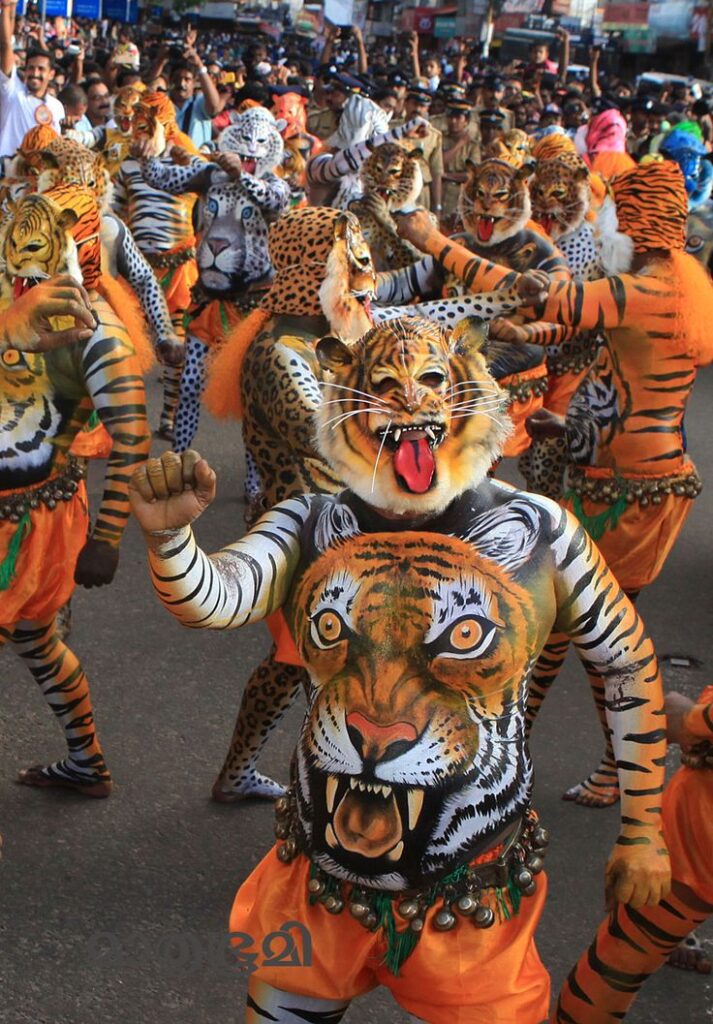
In April-May, streams of visitors and devotees flow into the hillock- centered town of Trichur, now called Thrissur, crowned by its Vadakkunnathan Temple. In the afternoon, when crowds have massed on the slopes of the hillock, a line of beautifully caparisoned elephants emerges. Slowly it trudges to the bottom of the hill and then it turns to face a competing line of elephants who have also emerged from the temple. In full view of the admiring crowd, shimmering, glittering, ceremonial umbrellas are held aloft on the backs of the elephants while the wind and percussion orchestra blares, crashes, thunders and clangs. Fly-whisk bearers swirl and twist their plumes. Then more umbrellas blossom atop the competing line of elephants

through their arm ballet. And the whole sequence starts all over again. Its as spectacular as a pageant in a medieval court, and as exciting. That evening expectant mothers leave Trichur And then the night ex-its cloudy tail, Kerala celebrates its post harvest festival of Onam: ladentables, floral decorations, folk dances, gift giving and new clothes.and their orchestra adds to the general jubilation. Their fly-whisk bearers go plodes in a titanic thunderclap and the world’s greatest fireworks display fills the sky with exploding stars and nebulae and whirling galaxies of whistling, howling, shrieking light. It leaves spectators stunned and quite speechless. And thankful that there is only one Trichur Pooram every year! The only phenomenon that can compete with Trichur’s fireworks is a monsoon thunderstorm over Kerala.
According to legend it also marks the annual return of the benign King Mahabali from his exile in the underworld.
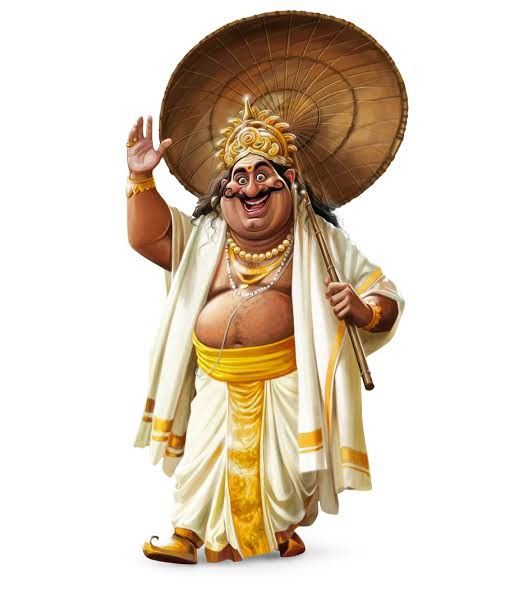
A part of the Onam celebrations is the great boat pageants and races. Once upon a time these races were post-harvest water-wars between the backwater flotillas of rival princes. The most famous of these boat races is held in a backwater off the canal town of Alleppey on the second Saturday of August.
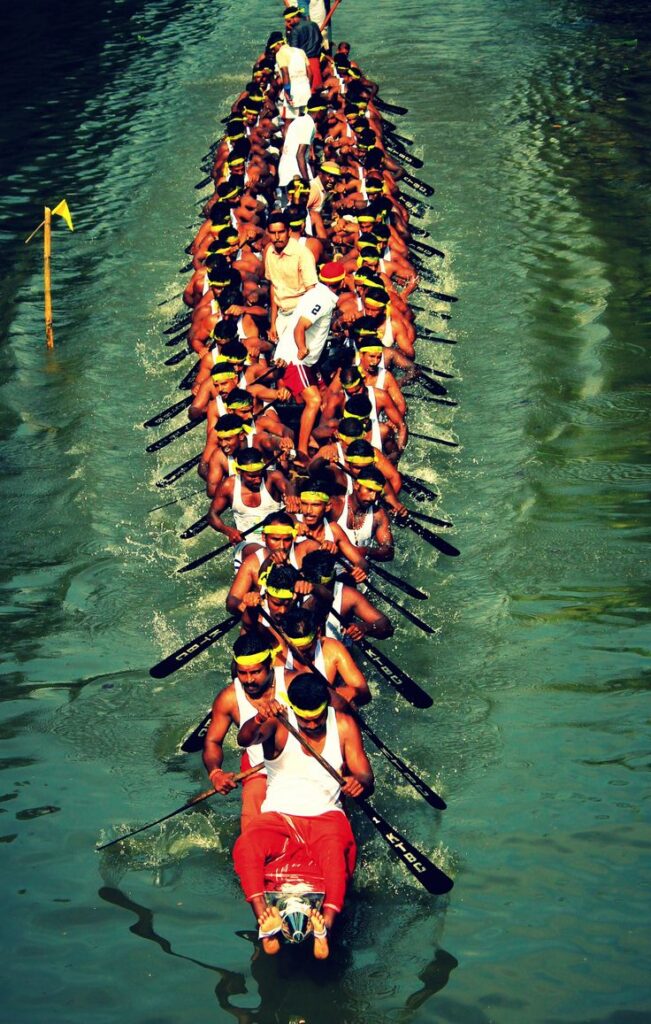
The Persuasive Cuisine of Kerala
Always, when talking about food, start with the pre-occupations. They are so wildly off the mark that they make excellent dinner-table conversation when savouring the real thing. For instance, “All Indian food is hot”, goes the bias, “and south Indian food is the hottest.” This is the same as the other food prejudices: “All American food is hot-dogs and hamburgers. All Chinese food is American chop-suey!”
In fact 90% of Indian food, perhaps more, has very few chillies. It is, more often, flavoured with the non-scalding spices such as cinnamon, cardomom, ginger, cloves, garlic, cumin, corriander and turmeric. Spices are used in India to tone up the system the way wines aid the digestion of western cuisine.
As for the cuisine of Kerala, with a few notable exceptions, it is mildly flavoured, gently cooked and sits with a certain genteel delicacy on the stomach. A case in point is the rich biryanis of the northern parts of Kerala: the Malabar biryanis.
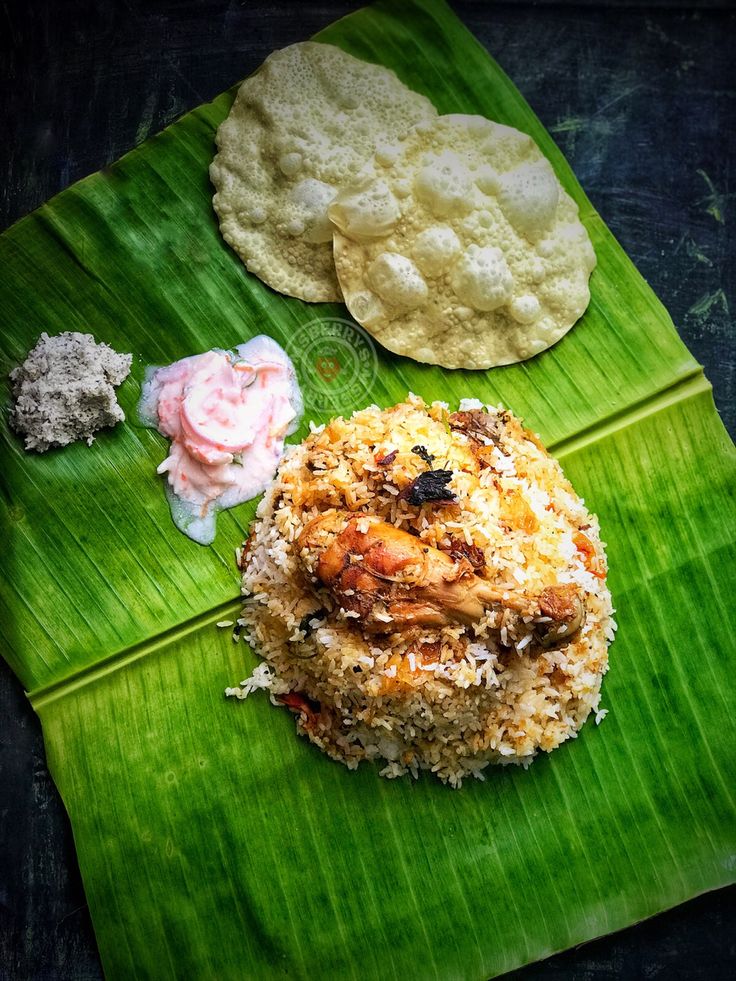
Pilaos, pilafs and biryanis are meats, spices and onions slowly steam- cooked in boiled rice. Thus all the goodness of the rice and the meat broth are locked into and blended in this dish which is served steaming hot. You’ll find it served off streetside barrows in the Asiatic republics of the USSR, Arabia,Spain (where it becomes the seafood Paella), Afghanistan, Pakistan, and all across our land. Our Malabar biryani, however, did not evolve during a long journey from the northern steppes. It was brought across the Indian ocean by Arab seafarers so its appreciably richer than its northern Indian cousin. Do eat it hot before the cooking fats which permeate it have had time to cool. Its a meal in itself. Excellent with crispy, crunchy papads: the lentil wafers called Popa-Dums in restaurants abroad.
A favourite breakfast dish is poottu. Rice flour dough is layered with grated coconut, like a ribbon cake, and steamed in a hollow bamboo cylinder. It is eaten sprinkled with sugar, or with mashed bananas or with a spicy curry made of channa or chickpeas.Iddlis or fluffy white steamed rice cakes, and dosas which look a bit like thin golden omlettes but are really pancakes made of an yeasty rice-and- lentil batter, are popular in Kerala and very acceptable fare for there is reason to believe that they aren’t strictly Malayali cuisine. They came across from the vegetarian kitchens next door, in the state of Tamil Nadu.

Kerala does have its own, well developed, vegetarian cuisine. If you’re there during the post-harvest festival of Onam do opt for a typical vegetarian Onam lunch. Its traditionally eaten on a banana leaf: very hygienic and disposable. Par-boiled rice is the staple for such a meal, as it is for most Kerala food, and then you ring the changes. A spoonful of rice, and then some thoren. Savour. A little avial with your next spoonful of rice. Or olen. Or kaallen. Or pachadi. A sip of water. Ahh! And then make the rounds all over again, in combinations now. In western food every dish, in a meal, is different, perhaps. In Indian cuisine, every mouthful is.Here, then, is a thumbnail guide to some of the foods that you could have had in combination with that par-boiled rice staple.The thorans are gravy-less dishes of finely chopped par-boiled vegetables, and possibly meat and seafood. The mustard seed used in them gives them a pleasantly assertive flavour, while the lightly fried grated coconut adds the crunch.Avial, on the other hand, is a mixed vegetable gravy dish thickened with coconut and yoghurt. Interesting vegetables, like drum-sticks… scrape out the marrow from the ribbed pieces, treat the protective skin as you would a marrow bone… jackfruit seeds and slices of mango are often used. Your salivary glands will respond very enthusiastically to your first mouthful of avial.Olen is also a gravy dish made of ash gourd and dry beans where the predominant flavour is one that you’re likely to encounter frequently inMalayalee cuisine: coconut milk. Don’t confuse this with coconut water which is the almost clear, refreshing liquid inside the coconut. Coconut milk is the fairly thick liquid squeezed out from the white flesh of a fresh coconut. Its too rich to drink but its great to cook with: the Malayalee equivalent of a dash of wine in haute cuisine.
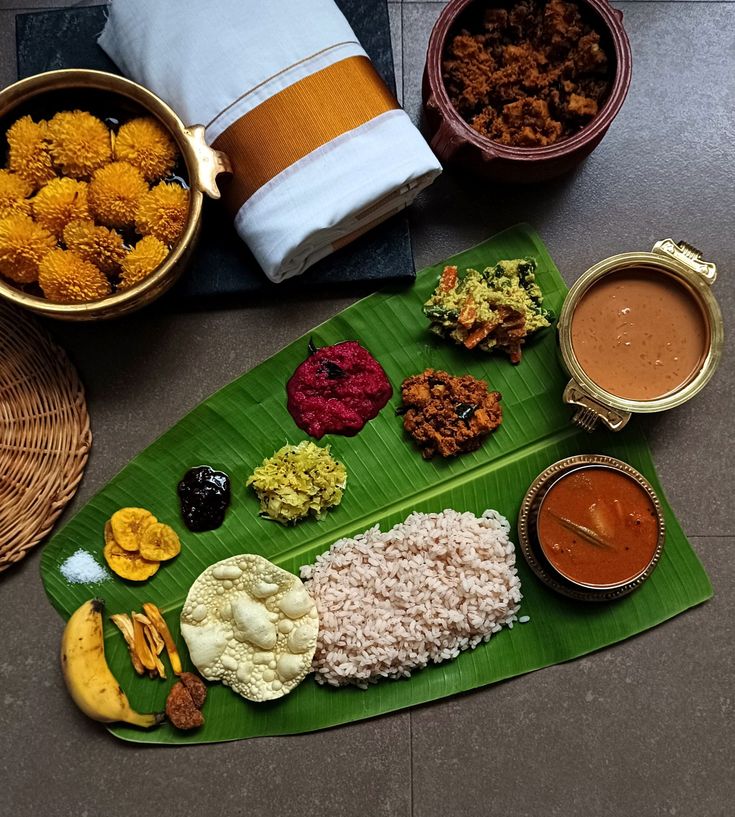
Bananas, of a special variety called ‘Cochin Bananas’are very popular in Kerala cuisine. Sliced finely and deep fried as chips they are chewy snacks; cut into bits, fried and dipped in jaggery or sugar syrup they are sweets; cooked in thick yoghurt and seasoned with chilly, turmeric, cumin seed and curry leaves they become kaallen – an accompaniment to the main meal.
Indian cuisine is strong on digestives and the Malayalee pachadi is samong the best. This is a fairly thick sauce made of sour yoghurt, grated coconut, mustard seed and a wide-spectrum range of spices including green and red chillies. The yoghurt and coconut, however, cool the rage of the chillies. And if you find little green leaves floating inside the pachadi, they’ve not blown in through the window. They’re leaves of the curry plant widely used in southern cooking and said to be chock full of good things.
Sambaar is a cross between a sauce and a broth. It contains mashed lentils, cooked vegetables and spices including the exotic and edible resin asafoe- tida. Most people find it appealing but some folk find the taste of the seasoning too strong. If you have a fastidious palate, avoid the sambaar.
Then there’s the dish which seems to be everyone’s favourite. A stew with chicken, or mutton or just vegetables, much like spiced Irish stew, cooked in coconut milk. This is eaten with appams. Appams are pancakes made from rice flour leavened with fermented palm sap and cooked on a lightly greased miniature wok. They’re white, soft and as light as a well-risen sponge cake in the centre; with crisp, frilly, petticoats all around. When you’ve had all you can with the stew, have another drenched with golden ghee or clarified butter, and still another with cream and sugar. Bad for the calorie count, great for a sense of well being.

Still feeling adventurous? Keep a cup of the hot, sweet, paayasam handy: they’re e porridge-like sweets with a vermicelli or rice base cooked in milk and sugar or jaggery.
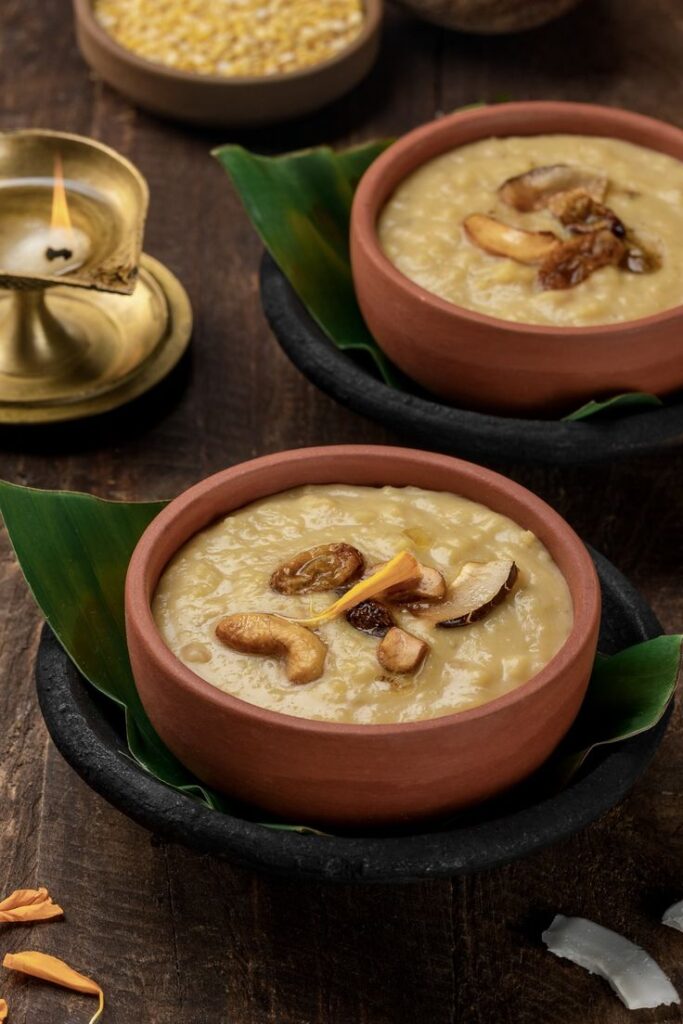
And then order a plate of Red Fish Curry and tapioca. In its original form it seems to have been created especially for fire-eaters and you might find yourself dancing around with sensory overkill. A deep gulp of paayasam might help,its incandescent, admittedly, but you should experience the most dra- matic exception to the rule that Kerala’s cuisine is mildly flavoured, gently cooked and sits with a certain genteel delicacy on the stomach.
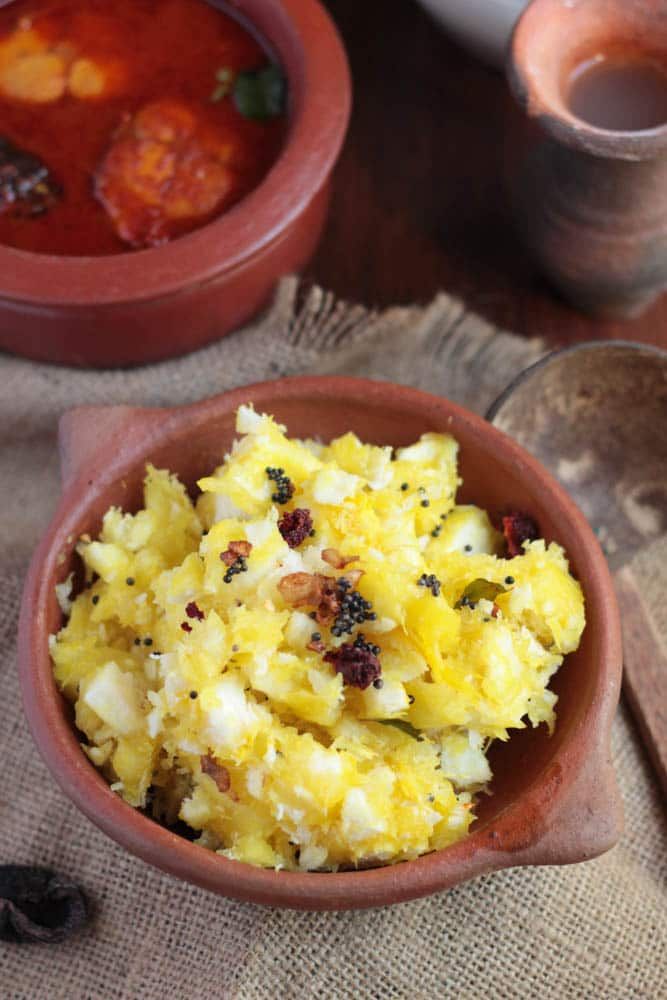
The Expressive Dances of Kerala
Kathakali
Somewhere in Kerala, every night, the gods and goddesses, sages, de- mons and fabulous creatures live again. Under the bright stars, and beneath the rustle of palms, men, women and children sit encaptured. On a stage, magnified by their moving shadows, the masters of Kathakali,in bright and voluminous robes, their faces made super-human by stylised make-up, strut and turn with stately tred. Drums roll, cymbals clash, and the voice of the singer conjures up the reversed tales of epic and fantasy.
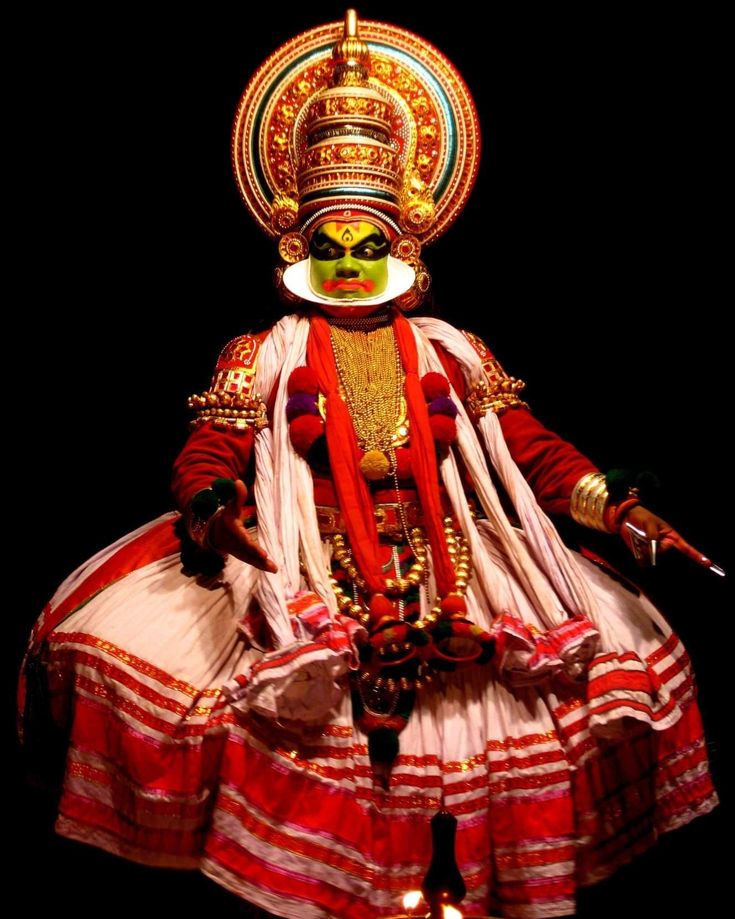
The dancers’ identification with their characters is as complete as is that of any great actor on a modern stage. With this difference. The dramas performed in Kathakali are based on beliefs thousands of years old; they are as much a part of the reality of the audience as the air they breathe and the blood pounding in their veins.
This epic drama’s roots go far back into the past. It grew from folk dances and, possibly, spirit-dances. It evolved through a physical depiction of revered tables for a pre-literate people and took on elements of the martial arts. It absorbed the grace of the high sophisticated Sanskrit dance form of Bharat Natyam and was transformed into a vehicle to translate the epics of this classical language into a common-person’s idiom.
According to the late Dr. J.H. Cousins, Art Advisor to the Govt. of Travancore, Head of the Dept. of Fine Arts of the University of Travancore – Kathakali gathered into itself elements from all the phases of the past-the religious intention, Puranic repertoire and humorous injections of the kuthu; the opening dedication from the ‘Gita Govinda’; the costuming of the Krishnattam; the gestures of the Ramanattam.”
Today, Kathakali is a highly stylised but an extraordinarily evocative art which combines chant, drama, dance, make-up, dress and gesture into a package that spins a compelling spell.
There is little point for a visitor to try to grasp what all the movements and gestures mean. According to experts there are 24 primary hand and finger gestures which give 404 signs, 40 secondary ones indicating 55 signs: a manual code of 459 signs. Then there are movements of the head and neck, the arms and hands, the eyes and eyebrows, the lips, teeth, tongue, feet and toes. All these must be read together as words must be read in sentences, correctly punctuated, and sentences in paragraphs before the meaning can be distilled.
Mohiniattam
Far more culture-bridging, because it depicts emotions in ways which are universally understood, is Mohiniattam: the Dance of the Enchantress. Originally this was a form which had been developed by dancing girls, and, possibly, courtesans. At one time professional dancing girls were considered to be courtesans. In the 1800s, the multi-talented ruler of Travancore State, Swati Tirunal, reshaped this dance form by incorporating into it some of the simpler, and more easily understood, facets of the classical Bharat Natyam along with some of the gestures of Kathakali. An evening of Kathakali is a very gripping one.
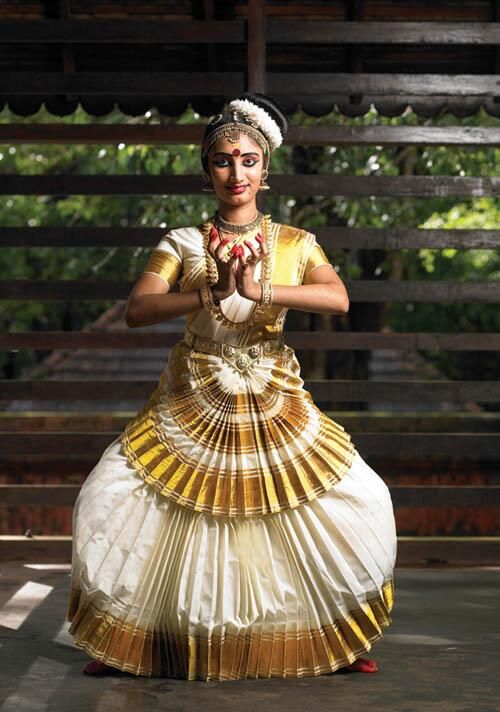
Chavittu Nadakam
The most unusual blend of cultural influences can be seen in the Christian dance-drama: Chavittu Natakam. It has an interesting history.
When the Portuguese came to Kerala, they wanted to create a vehicle to spread the myths and legends they held in reverence. It is more than likely that they were impressed with the gripping power of Kathakali but they obviously felt that it would be unwise to graft their legends onto the Kathakali dance drama. Clearly, the most obvious solution was to create a distinctive dance drama of their own. This is exactly what they did.
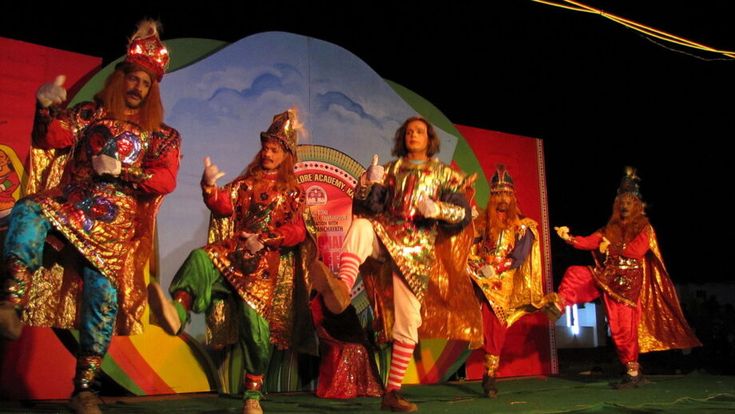
In Chavittu Natakam there are a large number of characters all in glittering medieval dress. They sing their lines loudly and with exaggerated gestures and they stamp their feet with great force on the wooden stage. Chavittu Natakam literally means the ‘Stamping Drama’. One is not likely, however, to see the stage reduced to matchwood as, apparently, used to happen when more militant actors trod… or rather, stamped on… the stage.
Theyyam
Theyyam is a traditional ritual dance form from Kerala, deeply rooted in the cultural and spiritual life of the region. It is performed in temples and sacred groves, primarily in the northern parts of Kerala
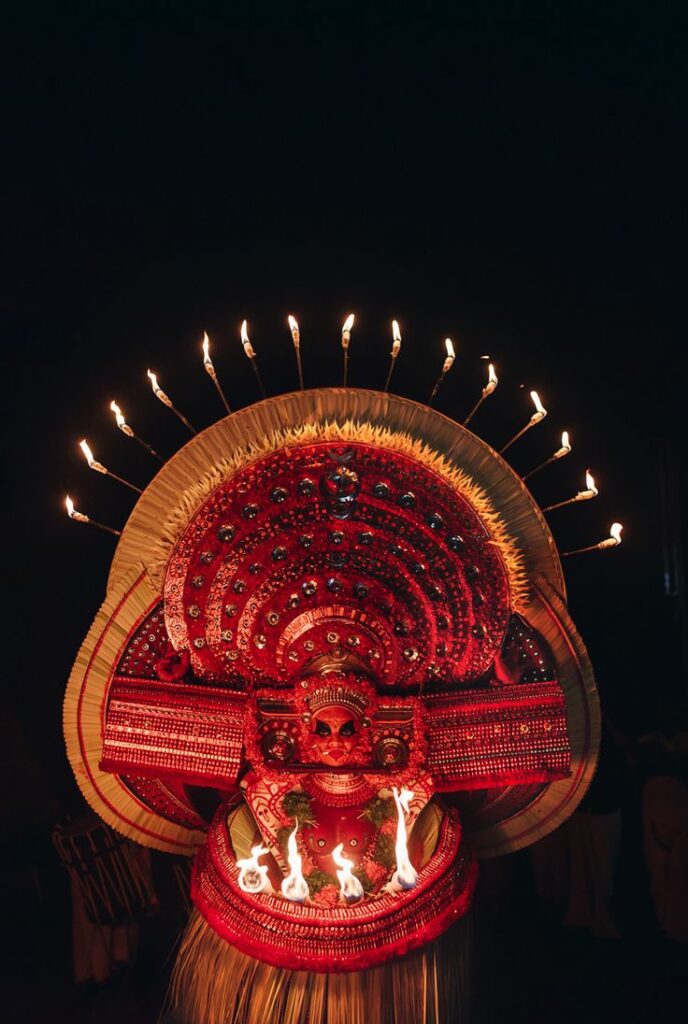
Theyyam is both a dance and a form of worship. The performer, who is often a male, transforms into a deity or a divine being through elaborate costumes, makeup, and masks. The ritual is believed to channel the presence of the deity, making it a sacred experience for the community . The costumes are striking and intricate, featuring elaborate headgear, colorful face paint, and large masks. The performers wear heavy and vibrant attire that symbolizes various gods, goddesses, and mythological figures.
The dance is accompanied by traditional drumming and singing. The rhythmic beats and chants are integral to the performance, guiding the dancer’s movements and enhancing the spiritual atmosphere. Theyyam performances often depict stories from local folklore, mythology, and legends. They celebrate the divine and heroic deeds of various deities and legendary figures.
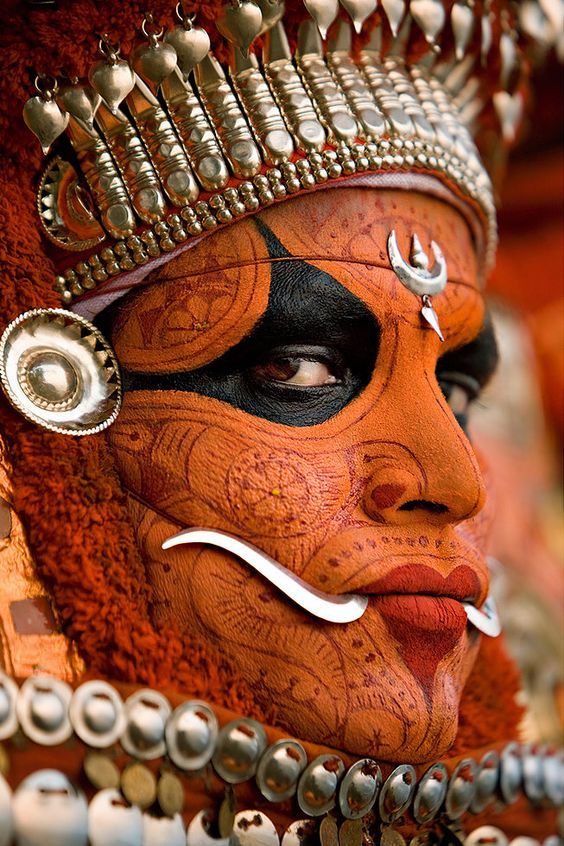
Theyyam is more than just a performance; it is a living tradition that integrates social, religious, and artistic elements. It plays a crucial role in the cultural identity of the communities where it is performed.There are many types of Theyyam, each associated with specific deities and regions within Kerala. The styles and practices can vary, reflecting the local traditions and beliefs.Theyyam is celebrated as a vibrant expression of Kerala’s rich cultural heritage and continues to be an important aspect of the region’s religious and social life.
Thiruvathira
Thiruvathira, also known as Thiruvathira Kali, is a traditional dance performed by women in Kerala, particularly during the festival of Thiruvathira, which falls in the Malayalam month of Dhanu (December-January).
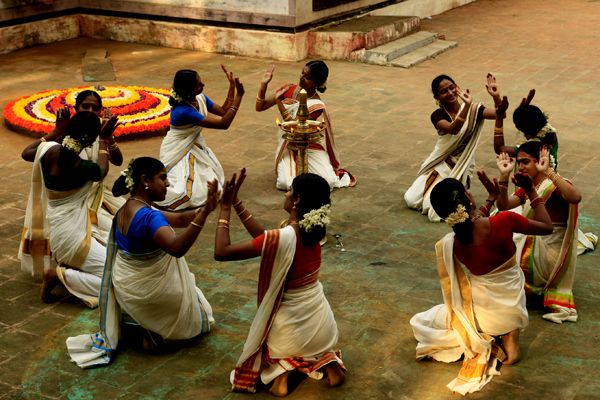
The dance is primarily associated with the Thiruvathira Nakshatra, a star in the Hindu lunar calendar, which is celebrated in honor of Lord Shiva and Parvati. It is observed during the festival of Thiruvathira, which is part of the larger celebration of Onam and the harvest season. Thiruvathira is performed in a circle by women who dress in traditional Kerala sarees. The dance is characterized by its graceful, rhythmic movements and hand gestures. The dancers move in synchrony, often in a circular formation, symbolizing unity and harmony. The dance is accompanied by traditional folk songs that are sung in praise of Lord Shiva and are related to themes of love, devotion, and nature. The songs play a crucial role in guiding the rhythm and movements of the dance. Thiruvathira has cultural and religious significance. It is not only a form of entertainment but also a ritualistic practice that brings communities together and celebrates the values of devotion, purity, and respect.

Comments